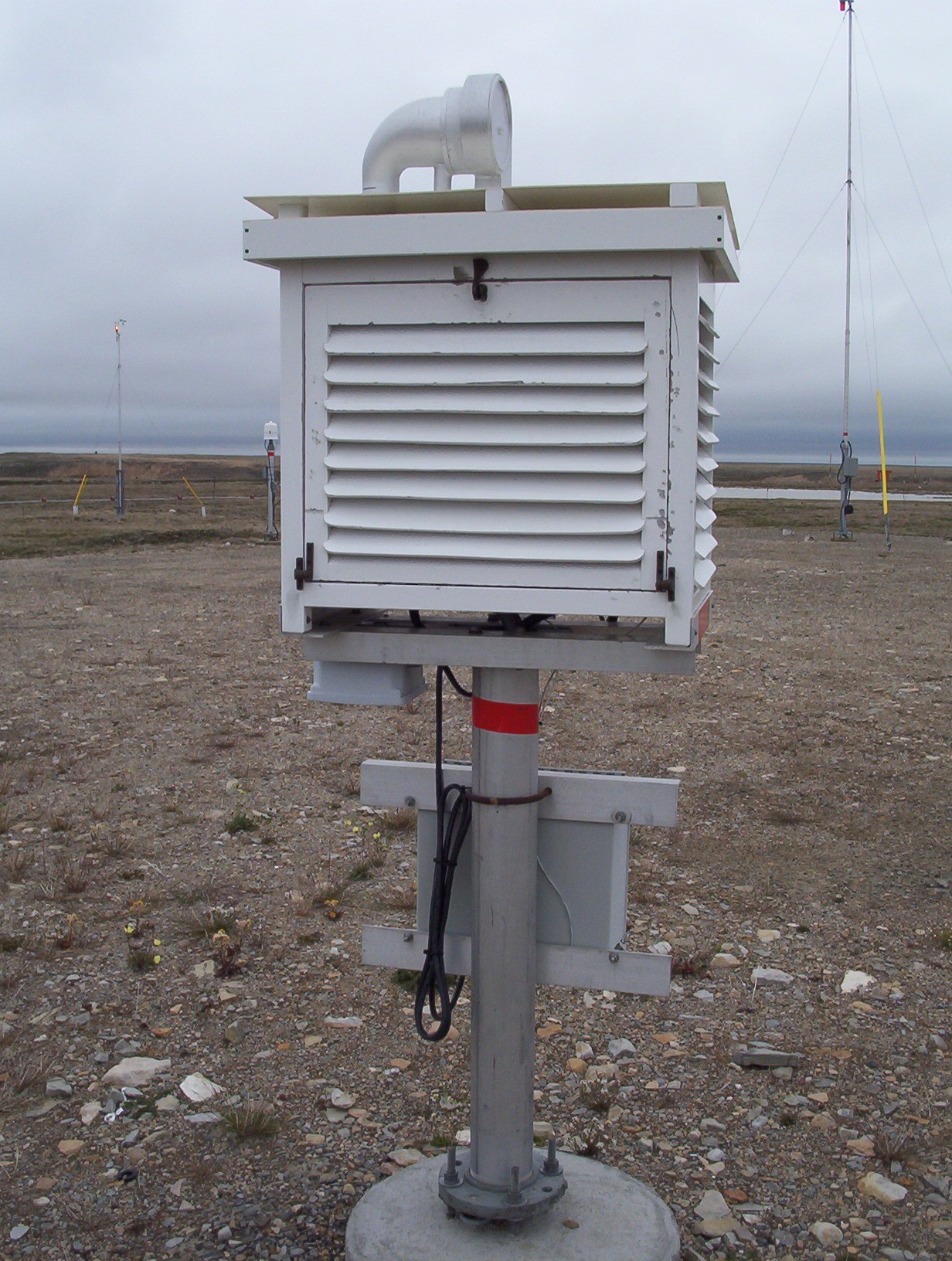
photo Kindly placed in the public domain by Cambridge Bay Weather
The familiar box that houses various weather instruments has an interesting origin. The father of the famous author Robert Louis Stevenson (Dr. Jekyll and Mr. Hyde, Treasure Island, etc.) was a British civil engineer who specialized in lighthouse design. He realized that the lack of standardization of how weather data was measured and recorded was causing inaccurate results and incorrect analyses.
He created a standard for the small double-louvered box with no floor in the middle 1860s. It was later modified to include the double roof and was ultimately adopted as the standard for the British Meteorological Society in 1884. Apparently there have been a number of regional variants including one for the "Cotton Region" of the US. I was surprised today to find that one of the regularly cited works for that is "The Effect of Thermometer Screen Design on the Observed Temperature", W.R. Sparks. It would be fun to find out if W. R. is a distant relative of mine.
According to Wikipedia the traditional interior size for a single unit (like the photo) "may be" 76.5 by 105 by 59.3 centimetres (30.1 by 41.3 by 23.3 in). In my reading of other papers it appears that there is a huge variation on those dimensions. Obviously given my current location in the Texas Gulf Coast (which may include "cotton" region), I will attempt to track down the 1972 paper on screen design and other design comparisons.
Because my budget does not allow me to buy a pre-made screen. I will be designing and building my own. I have learned a lot of "life lessons" regarding the design of outdoor equipment for use here in Texas and in most of the more than 3 dozen countries I have had the opportunity to work in. More on that to come.
 sparks.ron
sparks.ron
Discussions
Become a Hackaday.io Member
Create an account to leave a comment. Already have an account? Log In.